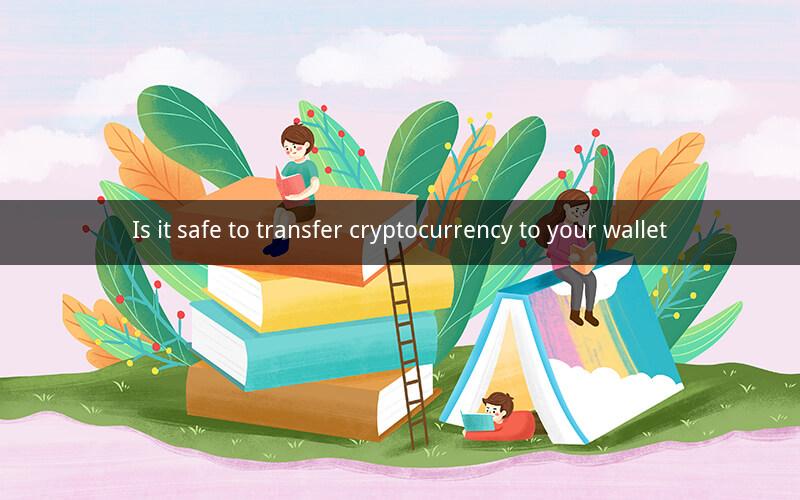
Table of Contents
1. Introduction to Cryptocurrency Wallets
2. Understanding the Security of Cryptocurrency Wallets
3. Risks Associated with Transferring Cryptocurrency
4. Best Practices for Safe Cryptocurrency Transfers
5. Common Security Features of Cryptocurrency Wallets
6. The Importance of Two-Factor Authentication
7. Keeping Your Private Keys Safe
8. The Role of Cold Storage in Secure Cryptocurrency Transfers
9. How to Identify Trustworthy Wallet Providers
10. Conclusion
1. Introduction to Cryptocurrency Wallets
Cryptocurrency wallets are digital tools used to store, send, and receive digital currencies like Bitcoin, Ethereum, and Litecoin. These wallets come in various forms, including mobile, desktop, and hardware wallets. Each wallet type offers unique features and security levels, making it essential to understand the risks and best practices for transferring cryptocurrency to your wallet.
2. Understanding the Security of Cryptocurrency Wallets
The security of a cryptocurrency wallet depends on several factors, including the wallet's design, the user's behavior, and the underlying technology. It is crucial to research and choose a wallet that prioritizes security to protect your digital assets.
3. Risks Associated with Transferring Cryptocurrency
Transferring cryptocurrency to your wallet can come with various risks, such as theft, hacking, and human error. It is essential to be aware of these risks and take necessary precautions to ensure a safe transfer.
4. Best Practices for Safe Cryptocurrency Transfers
To minimize the risks associated with transferring cryptocurrency, consider the following best practices:
- Use a reputable wallet provider
- Verify the wallet address before sending funds
- Enable two-factor authentication
- Keep your private keys secure
- Be cautious of phishing attacks
5. Common Security Features of Cryptocurrency Wallets
Modern cryptocurrency wallets incorporate several security features to protect users' assets:
- Encryption: Encrypting sensitive data like private keys ensures that only authorized users can access the wallet.
- Multi-signature: Multi-signature wallets require multiple private keys to authorize transactions, making them more secure.
- Cold storage: Cold storage wallets store cryptocurrency offline, reducing the risk of online hacking.
6. The Importance of Two-Factor Authentication
Two-factor authentication (2FA) adds an extra layer of security to your cryptocurrency wallet by requiring a second form of verification, such as a code sent to your phone or email. Enabling 2FA can significantly reduce the risk of unauthorized access to your wallet.
7. Keeping Your Private Keys Safe
Your private keys are the digital equivalent of a password for your cryptocurrency wallet. Keeping them safe is crucial to prevent unauthorized access. Here are some tips for keeping your private keys secure:
- Do not share your private keys with anyone
- Use a secure password for your wallet
- Consider using a hardware wallet for storing your private keys
- Regularly update your wallet software
8. The Role of Cold Storage in Secure Cryptocurrency Transfers
Cold storage is an essential aspect of secure cryptocurrency transfers. It involves storing your cryptocurrency offline, making it less susceptible to online hacking. Here are some common cold storage methods:
- Paper wallets: Print your private keys and addresses on paper and store them in a secure location.
- Hardware wallets: Use a dedicated device to store your cryptocurrency offline.
- Multi-signature wallets: Create a multi-signature wallet that requires multiple private keys to authorize transactions.
9. How to Identify Trustworthy Wallet Providers
To ensure the security of your cryptocurrency wallet, it is essential to choose a reputable wallet provider. Here are some tips for identifying trustworthy wallet providers:
- Research the provider's reputation and history
- Check for reviews and testimonials from other users
- Look for security audits and certifications
- Ensure the provider has a transparent development process
10. Conclusion
Transferring cryptocurrency to your wallet can be a safe and secure process if you follow best practices and choose a reputable wallet provider. By understanding the risks and implementing security measures like two-factor authentication and cold storage, you can protect your digital assets from theft and hacking.
Questions and Answers:
1. What is a cryptocurrency wallet?
A cryptocurrency wallet is a digital tool used to store, send, and receive digital currencies like Bitcoin, Ethereum, and Litecoin.
2. Can I transfer cryptocurrency to any wallet?
Yes, you can transfer cryptocurrency to any wallet, but it is essential to choose a reputable and secure wallet provider.
3. What are the risks associated with transferring cryptocurrency?
The risks include theft, hacking, and human error, such as entering the wrong wallet address.
4. How can I keep my private keys safe?
Do not share your private keys with anyone, use a secure password, and consider using a hardware wallet to store your private keys.
5. What is two-factor authentication?
Two-factor authentication (2FA) adds an extra layer of security by requiring a second form of verification, such as a code sent to your phone or email.
6. What are the common security features of cryptocurrency wallets?
Encryption, multi-signature, and cold storage are common security features that protect users' assets.
7. What is cold storage?
Cold storage is the process of storing cryptocurrency offline, reducing the risk of online hacking.
8. How can I identify a trustworthy wallet provider?
Research the provider's reputation, check for reviews and testimonials, and look for security audits and certifications.
9. What should I do if I lose my private keys?
If you lose your private keys, you may lose access to your cryptocurrency. It is crucial to keep backups of your private keys in a secure location.
10. How can I protect myself from phishing attacks?
Be cautious of unsolicited emails, messages, and calls that ask for your private keys or other sensitive information. Always verify the sender's identity before providing any information.